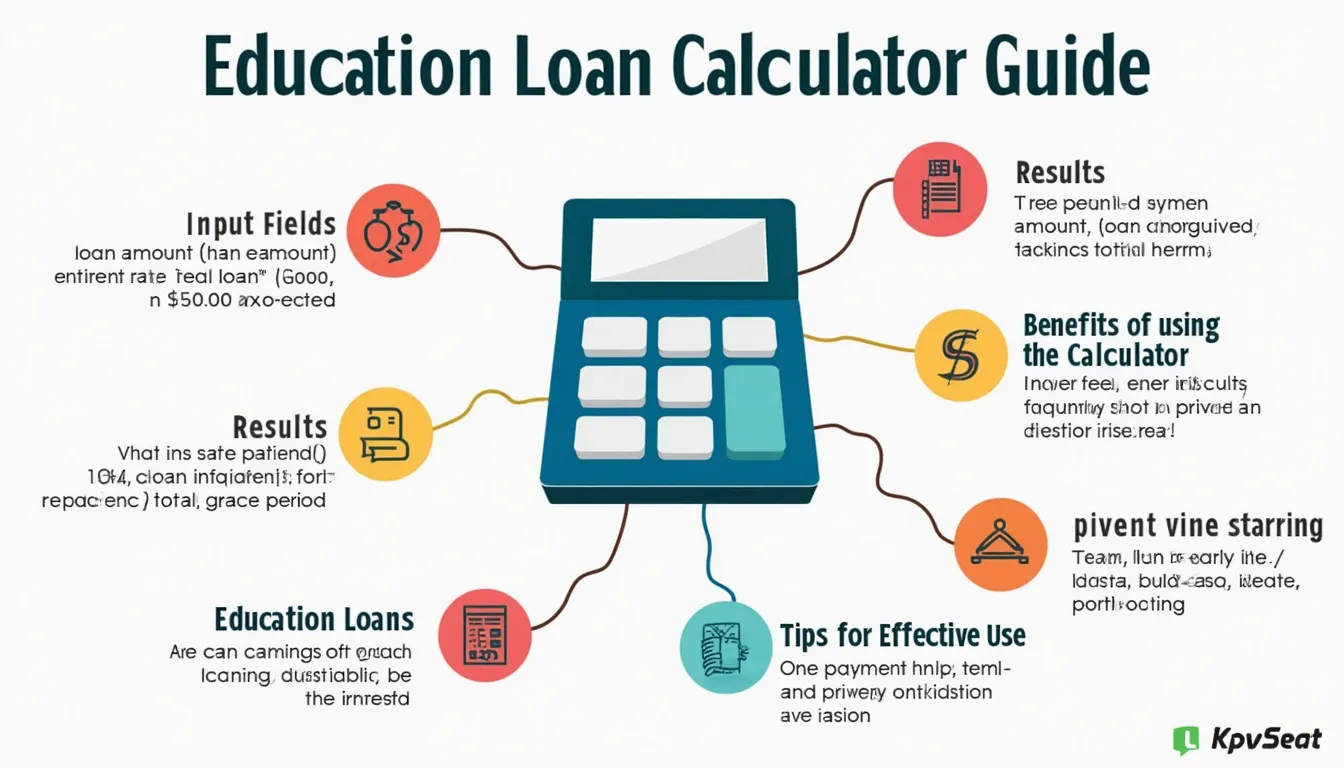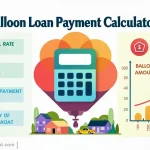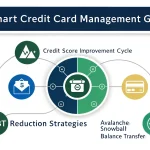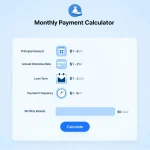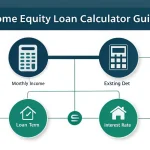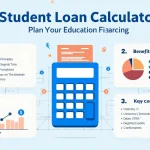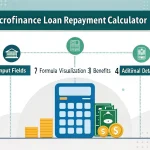Education Loan Calculator
Is this tool helpful?
How to use the tool
- Loan Amount: Type your principal. Example 1: $18,500. Example 2: $55,000.
- Annual Interest Rate (%)—enter the nominal yearly rate. Samples: 4.75 or 6.2.
- Loan Term (years): Choose the planned payoff period, e.g., 8 or 15.
- Repayment Frequency: Pick Monthly (12), Quarterly (4) or Annually (1).
- Grace Period (months): Optional; set 0, 6, etc., to add time before payments start.
- Press Calculate to display payment, total repayment and total interest.
Formulas
Without grace-period accrual, each periodic payment M is
$$ M = P \, rac{r(1+r)^n}{(1+r)^n-1} $$- P = principal
- r = annual rate / payments per year
- n = payments per year × term (years)
If a grace period of g months capitalizes interest, the adjusted principal becomes P′ = P + P·R·g/12, where R is the annual rate.
Example calculation 1
- P = $18,500, R = 4.75 %, term = 8 yrs, monthly.
- r = 0.0475/12 ≈ 0.003958; n = 96.
- M ≈ $232.00; Total repayment ≈ $22,272; Interest ≈ $3,772.
Example calculation 2
- P = $55,000, R = 6.20 %, term = 15 yrs, quarterly.
- r = 0.062/4 = 0.0155; n = 60.
- M ≈ $1,413.50; Total repayment ≈ $84,810; Interest ≈ $29,810.
Quick-Facts
- Federal fixed rates: 5.50 %-8.05 % for 2023-24 (U.S. Dept. of Education, 2023).
- Standard repayment term: 10 years (Federal Student Aid, studentaid.gov).
- Grace period on Direct Loans: 6 months (studentaid.gov).
- Average undergraduate debt: $28,950 (College Board Trends, 2023).
- No prepayment penalty on federal loans (“You’re never penalized for paying off a loan early”, studentaid.gov).
FAQ
What does this calculator show?
It returns your regular payment, total repayment and total interest based on principal, rate, term, frequency and any grace-period capitalization.
How is the payment figured out?
The tool applies the amortization formula above, using your annual rate divided by the number of payments each year to create a level schedule.
Does interest accrue during a grace period?
Yes. Federal unsubsidized and most private loans capitalize the unpaid interest, increasing your principal (Federal Student Aid, studentaid.gov).
Can I enter private-loan terms?
Absolutely—fill in the exact amount, rate and term shown in your private-loan disclosure to compare costs.
How does payment frequency change the cost?
More frequent payments lower r and shorten interest-accrual intervals, trimming total interest by 2 %-4 % in typical scenarios (CFPB Student Loan Guide, 2022).
What reduces total interest fastest?
Higher monthly payments or shorter terms cut interest; doubling a payment can halve the payoff time (Federal Reserve FAQ, 2021).
Do extra payments fit this formula?
No. The calculator assumes fixed payments; use the output as a baseline, then apply any surplus directly to principal to recalculate.
Can I assess refinancing with this tool?
Yes. Run current loan numbers, record totals, then plug in the refinance rate and term; the difference shows potential savings.
Important Disclaimer
The calculations, results, and content provided by our tools are not guaranteed to be accurate, complete, or reliable. Users are responsible for verifying and interpreting the results. Our content and tools may contain errors, biases, or inconsistencies. Do not enter personal data, sensitive information, or personally identifiable information in our web forms or tools. Such data entry violates our terms of service and may result in unauthorized disclosure to third parties. We reserve the right to save inputs and outputs from our tools for the purposes of error debugging, bias identification, and performance improvement. External companies providing AI models used in our tools may also save and process data in accordance with their own policies. By using our tools, you consent to this data collection and processing. We reserve the right to limit the usage of our tools based on current usability factors.
